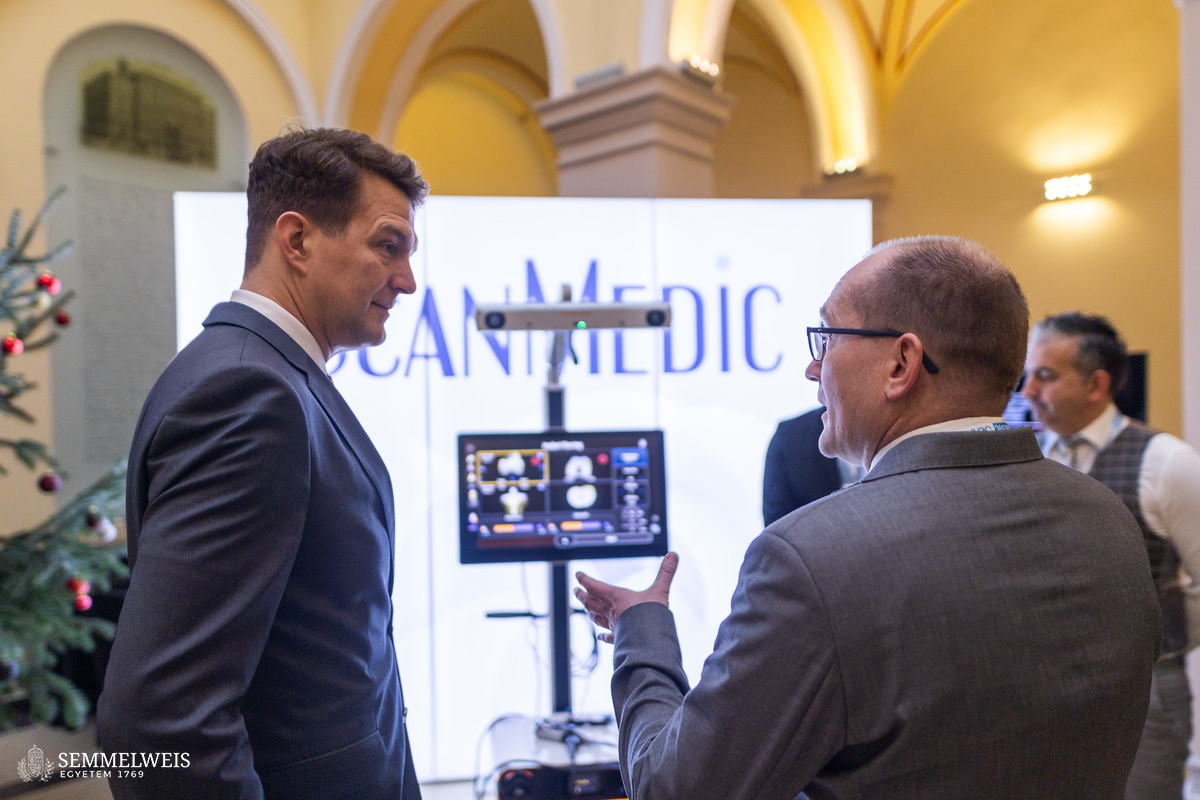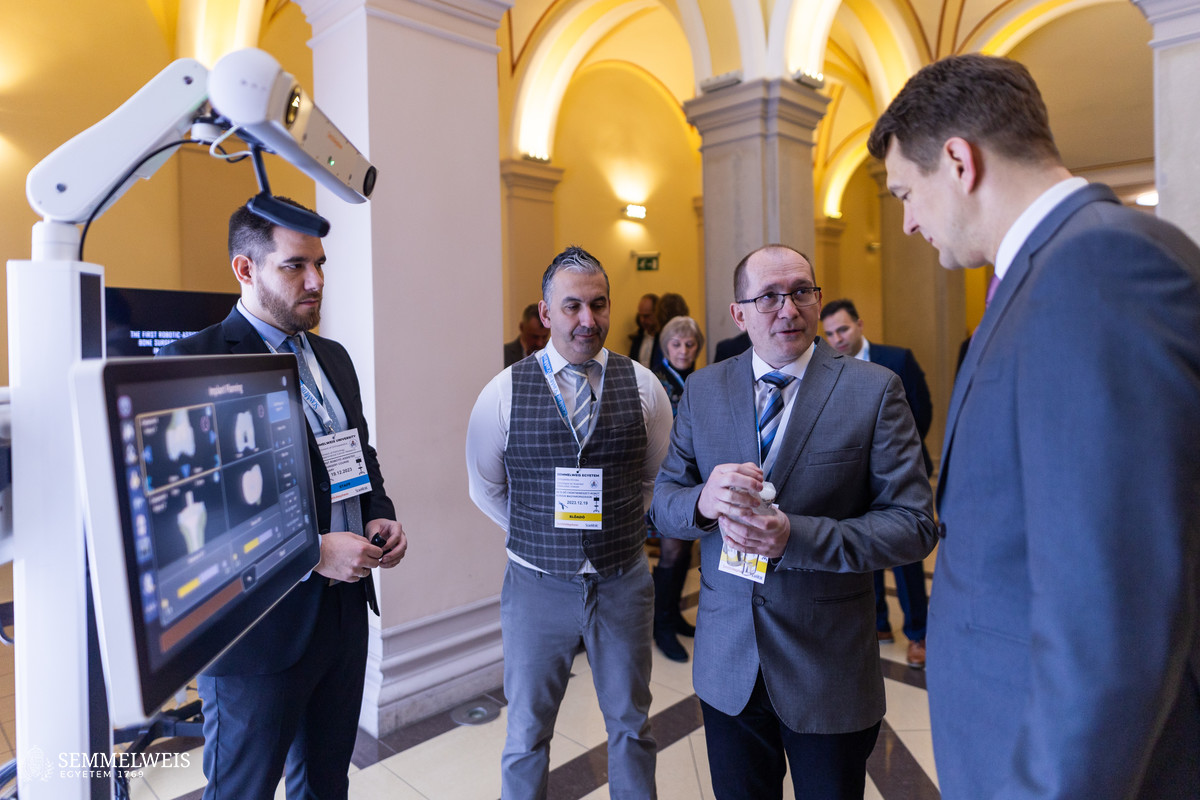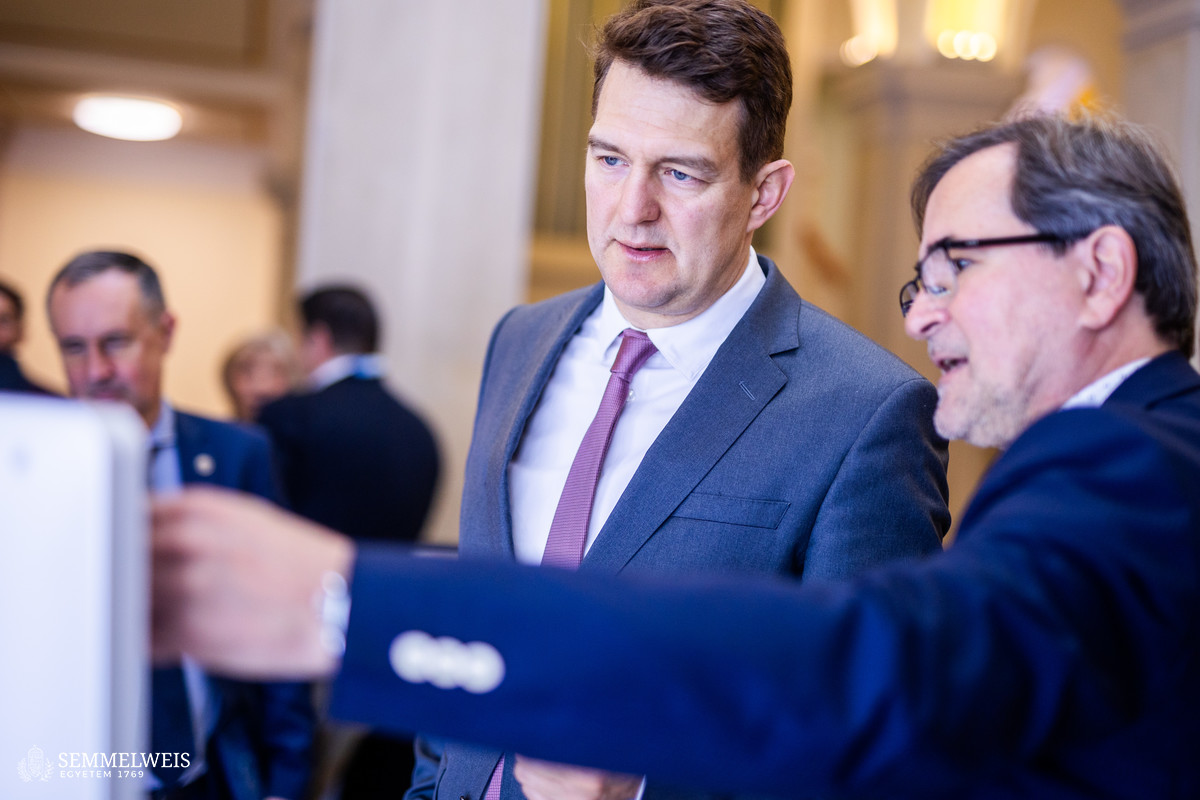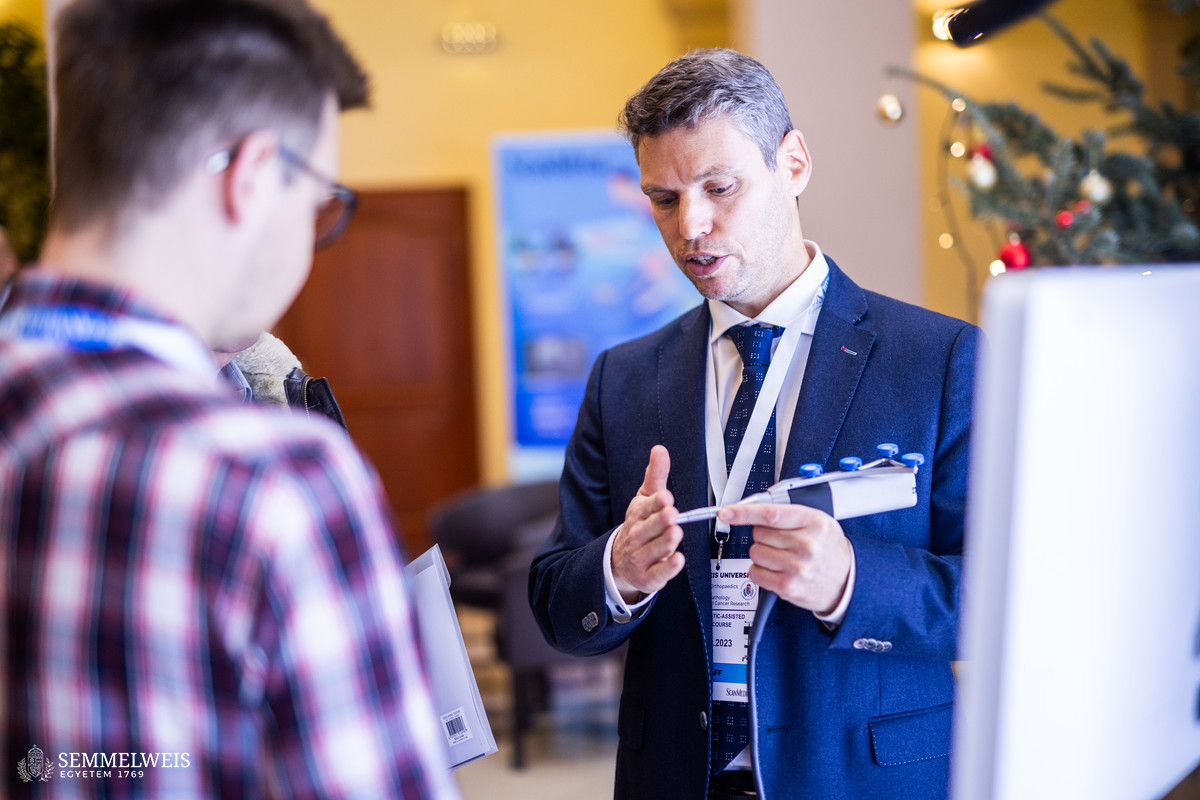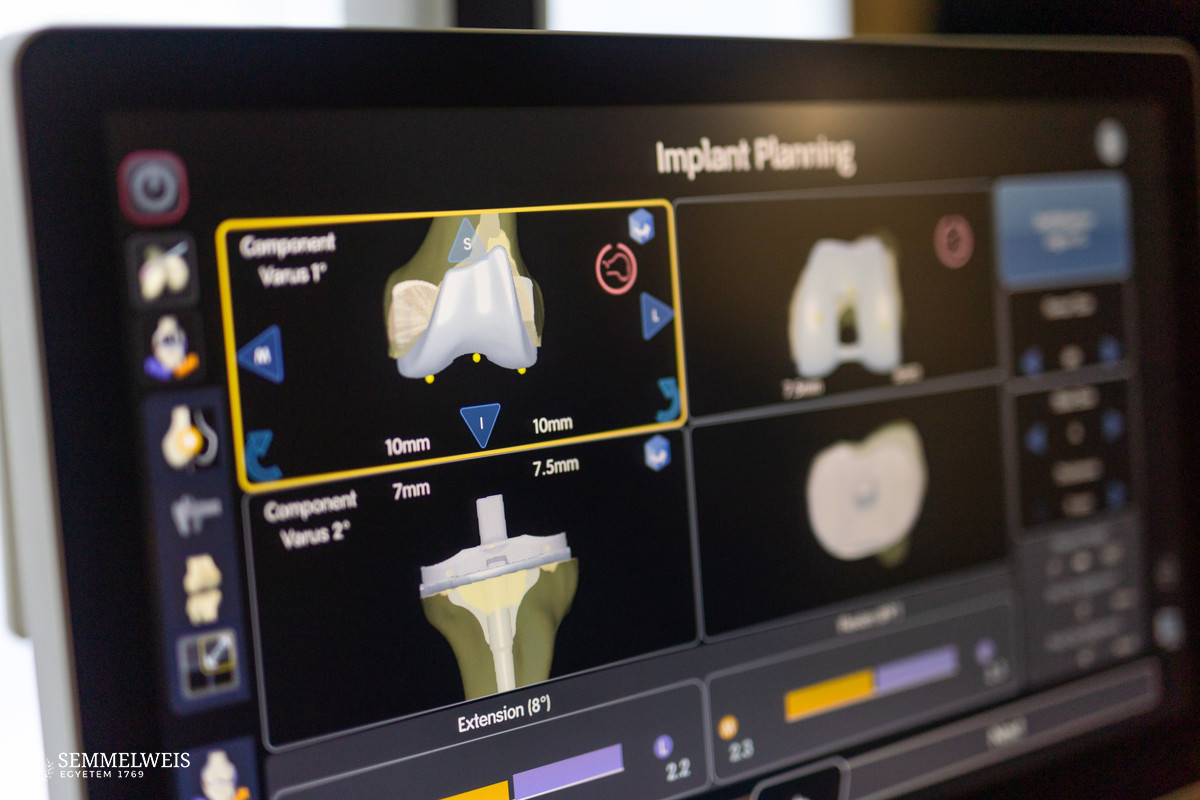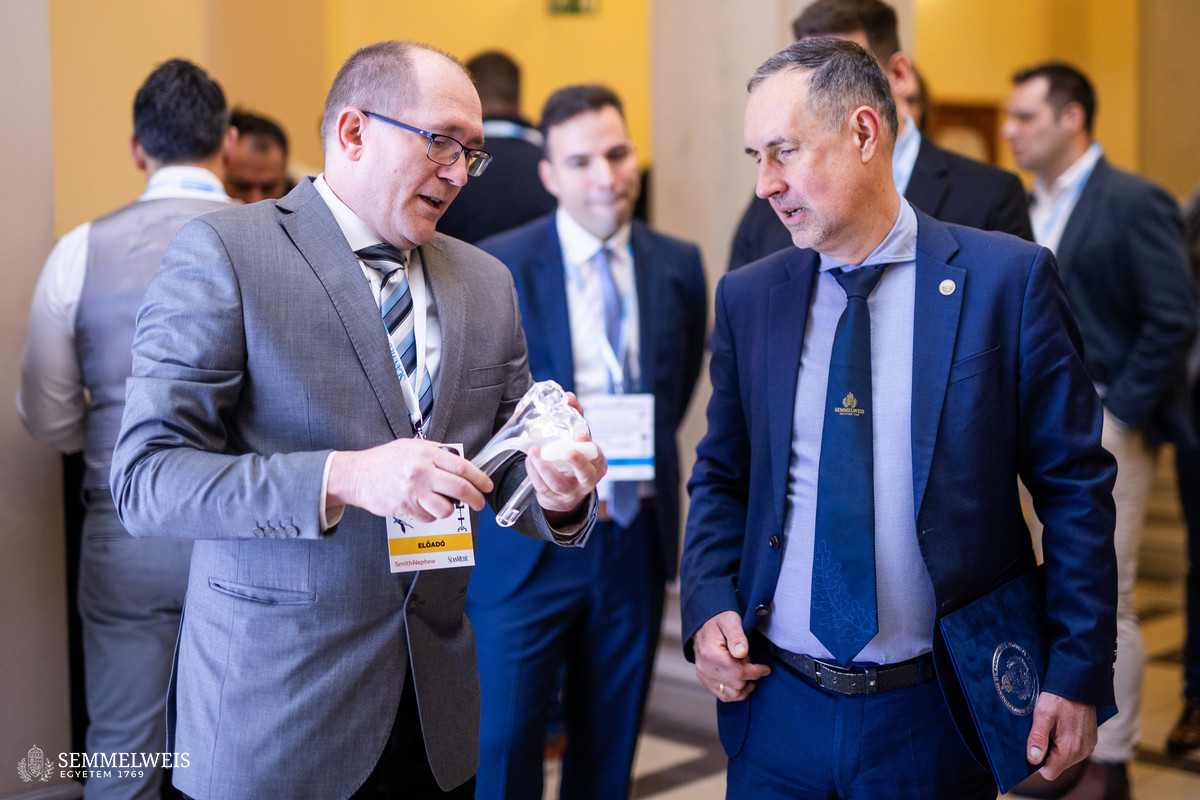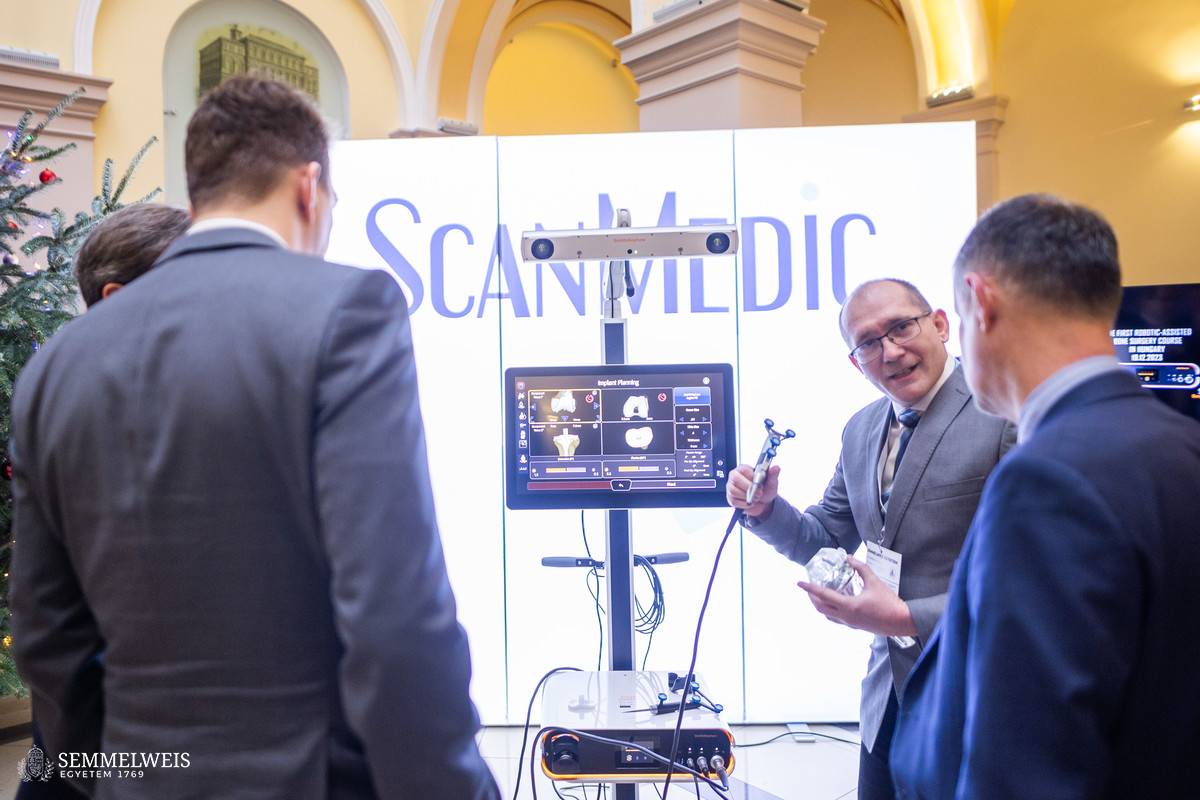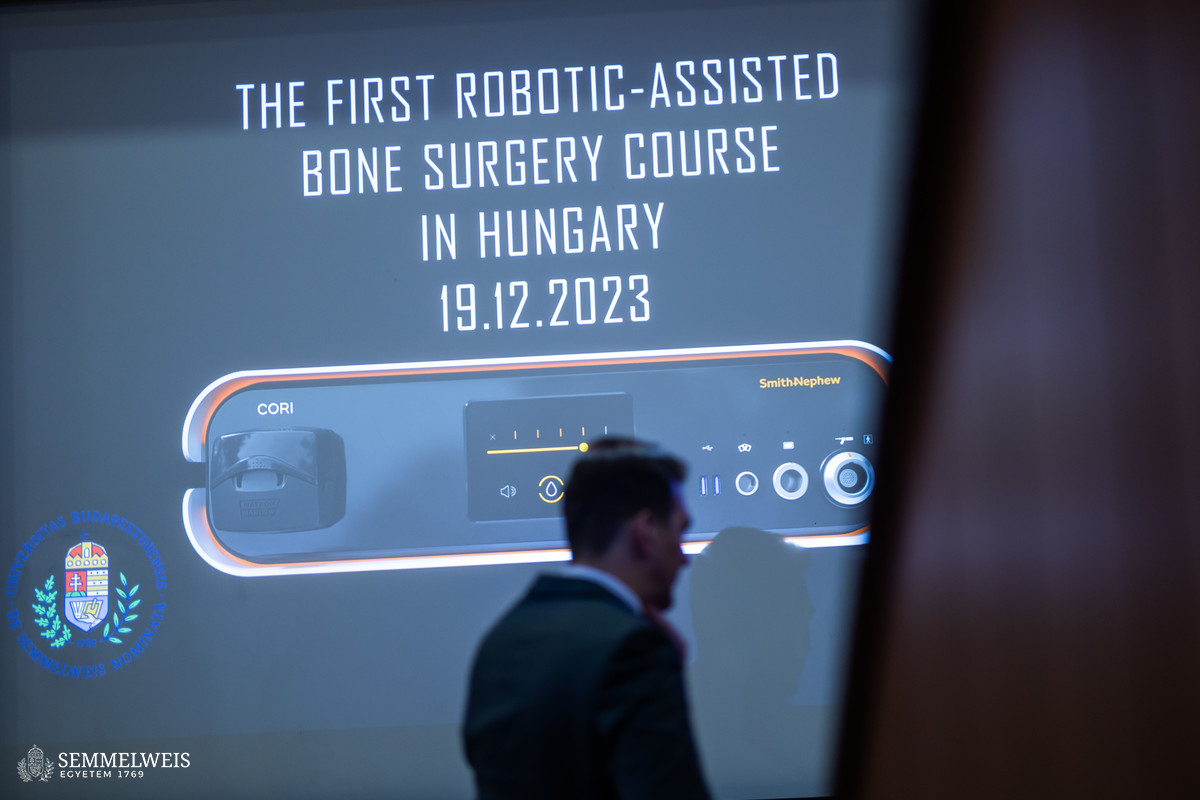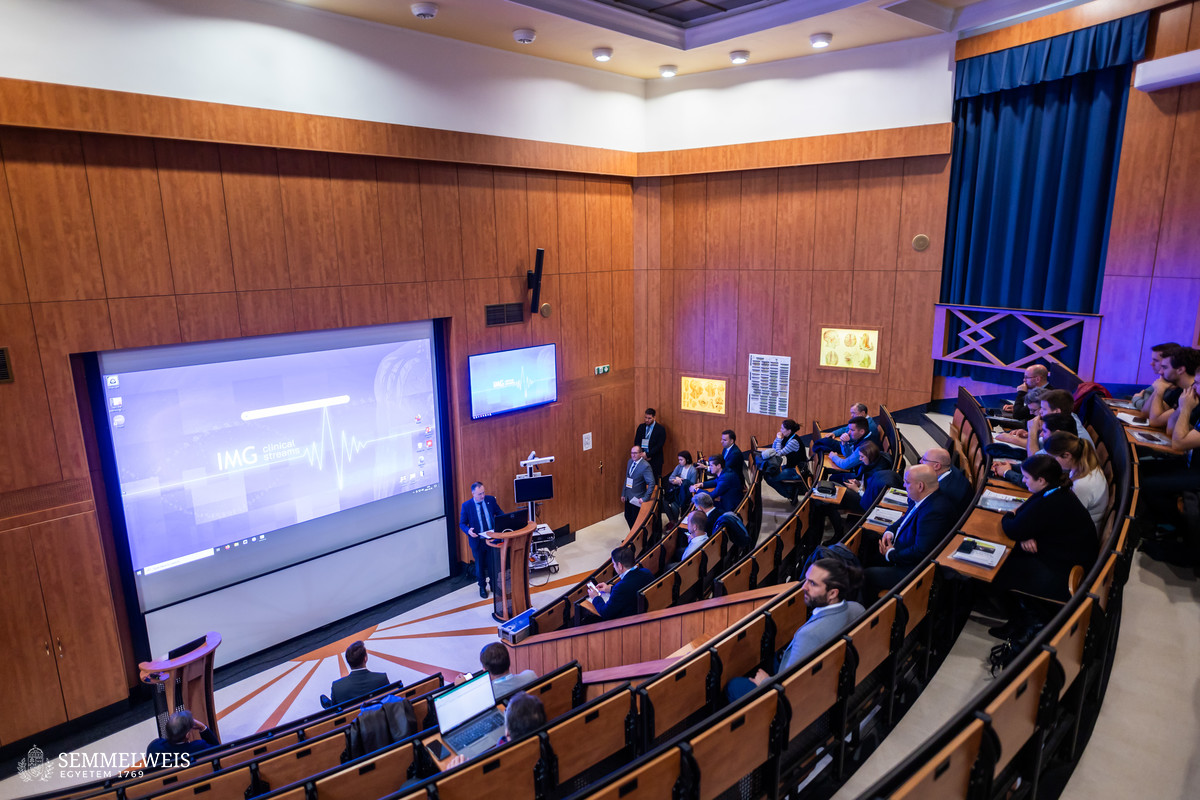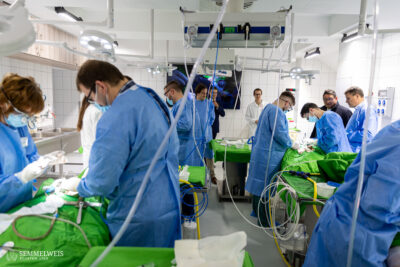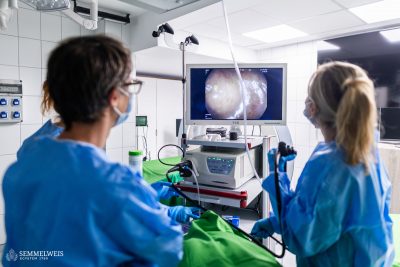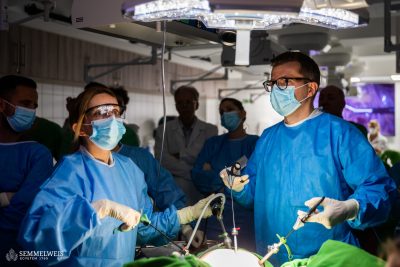At the opening of the workshop, Dr. László György, Government Commissioner, Ministry of Economic Development reminded that innovation is a state of mind, the approach of seeking and utilizing new solutions to old problems, to resolve issues more efficiently.
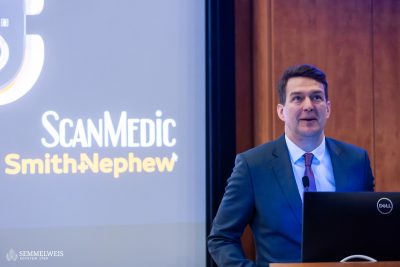 However, as the Commissioner pointed out, the government changed the structure of the higher education system in Hungary because innovation activities are not supposed to consider academic aspects only, but cost-benefit aspects as well. That is why I learned with pleasure that the device can recover its costs after 150 surgeries, he said.
However, as the Commissioner pointed out, the government changed the structure of the higher education system in Hungary because innovation activities are not supposed to consider academic aspects only, but cost-benefit aspects as well. That is why I learned with pleasure that the device can recover its costs after 150 surgeries, he said.
Dr. Attila Szabó, Vice-Rector for Clinical Affairs, explained that health innovation is an integral part of Semmelweis University as an internationally recognized knowledge hub. In the latest Times Higher Education (THE) ranking, it is among the top one percent of higher education institutions in the world. “There is no other way to maintain this position or to move forward except through innovative renewal of higher education,” said the Vice-Rector.
 He stressed that it is not at all easy to keep up with the knowledge that is being revised approximately every two years, including the latest technology in surgery, but the university considers it crucial to be at the forefront of the implementation of such. At present, robotic surgery is being applied in abdominal, gynecological and urological surgeries at the clinics. This will be followed by ear, nose and throat surgery at the beginning of 2024, and orthopedics later on, where the technology will first be available for knee replacement surgeries, then hip and shoulder surgeries, Dr. Attila Szabó added.
He stressed that it is not at all easy to keep up with the knowledge that is being revised approximately every two years, including the latest technology in surgery, but the university considers it crucial to be at the forefront of the implementation of such. At present, robotic surgery is being applied in abdominal, gynecological and urological surgeries at the clinics. This will be followed by ear, nose and throat surgery at the beginning of 2024, and orthopedics later on, where the technology will first be available for knee replacement surgeries, then hip and shoulder surgeries, Dr. Attila Szabó added.
According to the Vice-Rector, the university is “determined” to raise the funds for all this, and he went on to thank the Government Commissioner for his support for the university’s innovation endeavors, adding that he is confident that by working together, they will find a place for the project in the university’s patient care portfolio.
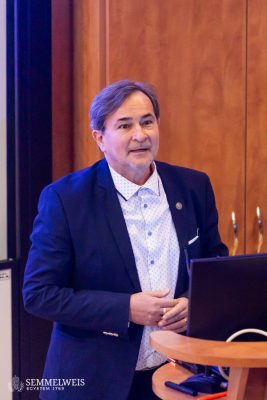 Dr. György Szőke, Director of the Department of Orthopedics, said in his short welcome speech that it is of great importance to them that the first orthopedics training course in robotics is at the university, and they are committed to fill the current gap in robotic surgery with the device in focus. He said that two of the clinic’s staff have already completed an international training course, which will enable them to put this method into practice as soon as possible, and that they plan to use robotic technology in a pilot program around January-February.
Dr. György Szőke, Director of the Department of Orthopedics, said in his short welcome speech that it is of great importance to them that the first orthopedics training course in robotics is at the university, and they are committed to fill the current gap in robotic surgery with the device in focus. He said that two of the clinic’s staff have already completed an international training course, which will enable them to put this method into practice as soon as possible, and that they plan to use robotic technology in a pilot program around January-February.
Dr. Zoltán Bejek, the main organizer of the event, Associate Professor of the Department of Orthopedics, told our website that by applying robotics to musculoskeletal surgery, the clinic could be integrated into the university’s robotics system, which would eventually create a regionally unique educational center. In addition to patient care and training, the device could also be used in research, since the operators of the robot automatically join an international medical network, among whom there is a continuous exchange of ideas about the device’s application. The machine collects technical – albeit by no means personal – data about surgeries, so although it is not artificial intelligence, it is constantly evolving.
Robotic technology is also an advantage for patients, since in case of manual orthopedic surgeries, such as knee surgery implants, minor or major side effects may occur in about twenty percent of the patients, and this rate is significantly improved by the robot due to its accuracy. In addition, surgeries performed with a robot take less time, which puts less strain on patients in this aspect as well.
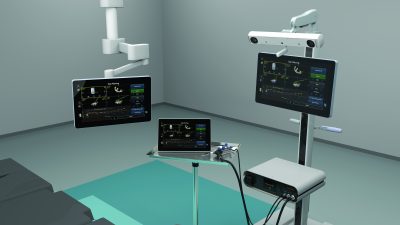 Dr. Zoltán Bejek explained that there are many robots designed for orthopedic surgeries available today, but he considers the robot designed by Smith & Nephew to be the most suitable, because, unlike other devices, it is significantly lighter and smaller in size, which means the robot can be moved to various operating theaters. Dr. Konstantinos G. Makridis, who is the regional director of ScanMedic, the distributor of Smith & Nephew’s technology, also addressed participants at the event. He is a well-known robotic surgeon, director of the A’ Orthopedic Clinic of Robotic Surgery in Thessaloniki, who is practically responsible for the transfer of knowledge of this robot technology.
Dr. Zoltán Bejek explained that there are many robots designed for orthopedic surgeries available today, but he considers the robot designed by Smith & Nephew to be the most suitable, because, unlike other devices, it is significantly lighter and smaller in size, which means the robot can be moved to various operating theaters. Dr. Konstantinos G. Makridis, who is the regional director of ScanMedic, the distributor of Smith & Nephew’s technology, also addressed participants at the event. He is a well-known robotic surgeon, director of the A’ Orthopedic Clinic of Robotic Surgery in Thessaloniki, who is practically responsible for the transfer of knowledge of this robot technology.
According to Dr. Zoltán Bejek, the robot is based on a computer navigation system that has a history of more than two decades in Hungary: the Semmelweis Department of Orthopedics was the first in the country to receive such a device in 2002. Dr. Zoltán Bejek wrote his PhD research on this topic, as well as held training courses on the subject in Hungarian and foreign universities; he is familiar with the different types of robots, and according to him, he would like computer navigation technology to develop as much as possible in the direction of robotics.
Viktória Kiss, Mária Sánta
Photo: Bálint Barta – Semmelweis University; Smith & Nephew
